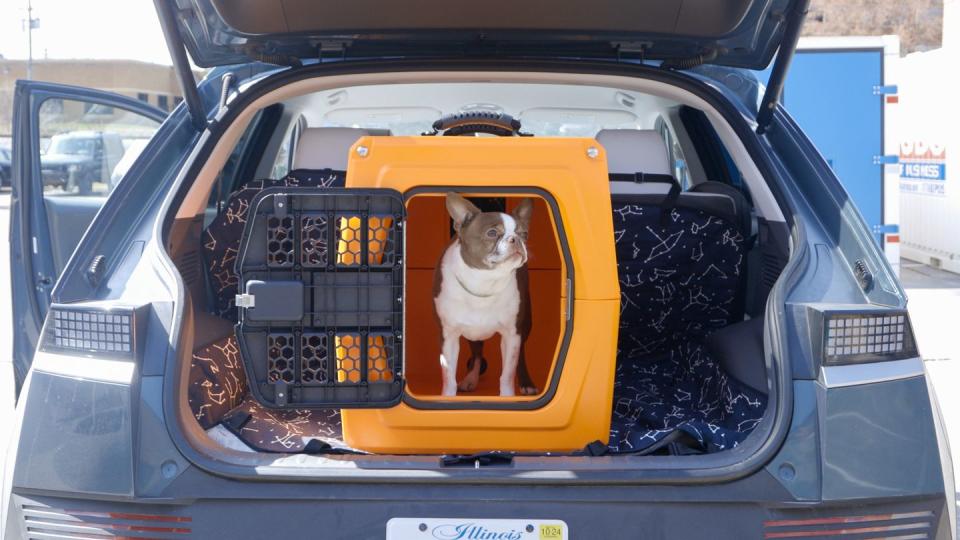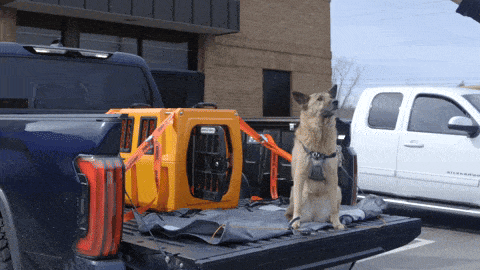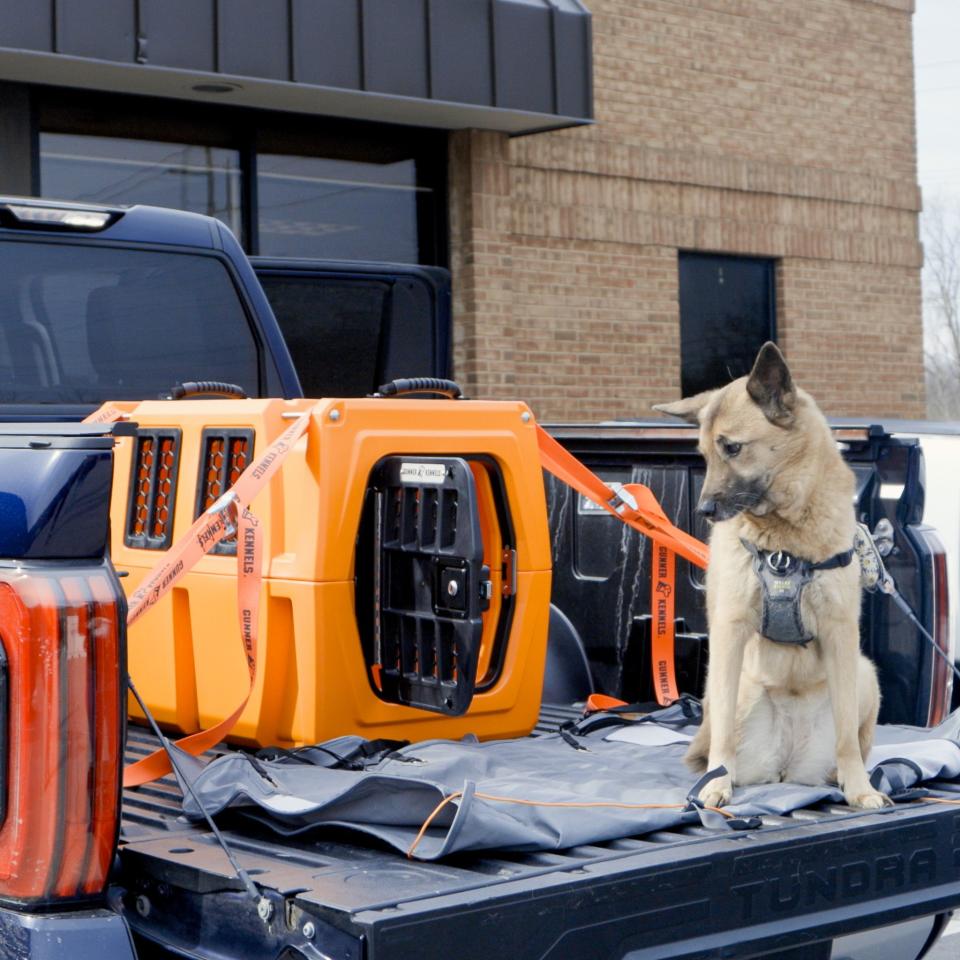Take Your Pet for a Ride with the Best Dog Car Crates, Carriers, and Restraints, Picked by Experts

"Hearst Magazines and Yahoo may earn commission or revenue on some items through these links."
If you have a pet, you understand they're more than just a furry roommate—they're family. As pet owners, we're responsible for their food, water, and safety at home, but how do we best care for them in our vehicles?
Despite the pet industry's staggering financial worth, there's a significant lack of oversight of safety and testing standards when it comes to pet products. When researching this article, we were shocked to learn this dirty little secret. Every pet product claims to be safe, but there's no real way to be sure. Tiptoeing through the marketing jargon was like walking through a minefield—or a poop-laden backyard. At night.
In our quest to find the best dog and cat car seats and restraints, we turned to the Center for Pet Safety (CPS) for insight. This group is widely regarded as the only nonprofit consumer advocacy organization dedicated to pet safety. We spoke with founder and CEO Lindsey Wolko about CPS's rigorous testing and certification programs that separate pet safety facts from marketing fiction.
Things to Consider
We love our pets—and we're sure you love yours too. But it's important to know that, like your child (it is your fur baby, after all!), your pet should always be secured—and, preferably, contained—when your vehicle is in motion. That is to say, those simple open pet car seats (like home pet beds) are not enough; the CPS does not recommend them, and we wouldn't use them for our pets, so we declined to include them in this test or this article.
If you're shopping for a cheap, unrestrained pet car seat, you'll need to look elsewhere. But if you want to keep your pet safe while driving, here's what you need to know about car pet carriers and harnesses.
Safety and Independent Testing
While consumables like pet food, treats, and pharmaceuticals are subject to premarket standards, dog and cat car seats are not. This lack of regulation means that any restraint can claim to be safe for your pet.
To ensure your pet's safety, the Gear Team recommends choosing restraints tested by the leading independent pet product testing group, the Center for Pet Safety (CPS). All restraints mentioned in this article have met the CPS's strict criteria. The guidance in this article is directly from CPS, and we thank them for their mission and assistance in creating this informative piece.
Type
Pet seats fall into three categories: crate, carrier, and harness. A crate is generally used for larger dogs and placed in your SUV hatch or truck bed, then secured with tie-down straps to anchor points. A carrier is for smaller dogs and cats (generally under 18 pounds), portable, and secured to the rear seat using seatbelts and headrests. The last is the harness, which rests on a dog's upper body and is secured by the seatbelt.
Fit
Harness: The industry standard for harnesses is the "two-finger fit," meaning that a harness is a good fit if you can comfortably fit two fingers between it and the pet's body. CPS implements this fit standard in its testing.
Carrier: When choosing a carrier, pay close attention to the weight rating and the measurement of your dog's body. A pet can feasibly fit into the weight rating but may be too leggy to fit comfortably inside. If you are unsure, weighing and measuring your pet is recommended. Carriers are usually suitable for both cats and dogs.
Crate: A snug fit is critical for crates. This video from Gunner Kennels does an excellent job of demonstrating the importance of a snug fit for your dog. Too much room leaves your dog vulnerable to additional g-forces within the restraint system, so ensure you get the correct measurements and the right-size crate for your animal.
Travel
While these restraints are tested for vehicle safety, they are also ideal for other types of travel. If you and your small pet fly regularly, consider a duffle-style carrier that fits onto luggage and underneath plane seats.
Price
You may be a little shell-shocked by the prices, but consider these an investment. Companies that offer safety-certified products have spent considerable time and money to prove their product will protect you and your pet. Also, it's important to remember that if your pet is injured in an accident, the vet bill will likely far exceed the price of the car seat.
How Dog Car Seats & Restraints Were Evaluated
When purchasing a pet restraint for the car, safety should be every pet owner's primary concern. Cost and convenience can be factors, but they should never be the deciding ones. Given that crash testing with live pets is not feasible, we relied on the expertise and data from a leading pet-product advocacy group. However, subjective analysis is also crucial.
We asked the Car and Driver staff to bring their pets in for a photo shoot on testing day. Our work mainly consisted of installing the seats into our long-term Toyota Tundra to understand the ease of use and features that each seat offered. In this test, our role as the Gear Team was to evaluate the following aspects:
Installation
Features
CPS safety testing guidance
Note: All products featured were purchased using a personal account. Companies were not made aware of this test.
How the Experts Test Pet Car Carriers
As for things like crash testing, etc., obviously we weren't going to put our personal pets at risk or crash any cars. Instead, we relied on testing data obtained from the experts at the Center for Pet Safety.
CPS grades on a point system for specific elements and uses high-level measurement tools like digital calipers and high-speed cameras to assess their work. The testing elements below are not the entirety of their scientific approach to testing, but they are intended to give you a good idea of what they are looking at to ensure safety. We thank CPS for their hard work.
CPS has strict criteria for passing these products. All products are tested at 30 mph.
HARNESSES
Tested on second-row benches
Excursion distances (how far the pet launches forward)
Strap movement (how much does the harness loosen during impact)
The legs of a pet cannot come loose during impact, the harness cannot break, and any product with an extension tether is immediately disqualified
CARRIERS
Tested on second-row benches
Excursion distances (how far the carrier launches forward)
Carrier lift (measuring the largest angle between the bottom of the carrier and the bench seat)
Stitching and zippers must remain intact
Strapping at anchor points cannot tear or rip
If any part of the carrier fails, allowing the pet to escape, the carrier automatically fails
CRATES + STRAPS
Tested on carpeted sled machine (to simulate rear SUV hatch and truck bed)
The doors and windows must remain closed and locked
The crate and straps cannot fracture or break in any way
All crates must be anchored down with straps that the company provides
The Best Pet Car Seats, Harnesses, and Restraints

Gunner G1 Kennel
It's rare that we open a box and are immediately impressed, but that's what happened with the Gunner G1. Gunner car kennels are designed and marketed with hunters in mind, yet we see no reason this crate wouldn't be an excellent fit for anyone with a dog. We'd be hard-pressed to find a city-, suburban-, or country-living pet owner who wouldn't be captivated by this crate. It's that good.
The double-wall, rotomolded design results in sturdy walls. The robust door features three locking points—one key and two slider locks. And it comes in small, medium, intermediate, and large sizes. The small G1 is certified for the back seat and rear installation, while the other sizes must be in the truck bed or cargo hold only. Basically, the Gunner G1 car kennel is a tank and is clearly built to last. But quality comes at a cost, and its materials and construction also mean it's relatively heavy and quite cumbersome.
Safety Testing
Gunner has done its work in research, development, and safety. In the video below, you'll see some sliding about, but the carrier's shape remains intact, the straps stay attached, and the door stays secure. Gunner has also tested with other third-party facilities, including running this enlightening drop-crushing test to simulate crumple zones in a car accident.
Notably, the G1 needs to be strapped down, of course, and Gunner's accessory straps will set you back another $100. Now, while it would appear normal ratcheting cargo straps might work just fine to secure the crate, CPS does not certify non-OEM equipment. So, use your own straps at your own risk. (Moreover, CPS notes that the Large G1 did not pass its safety certification process.)
Still, there is plenty of anecdotal evidence by real users on the company's testimonials page. Real dogs in Gunner kennels are coming out unscathed after some pretty gnarly pickup-truck accidents. If that doesn't convince you that Gunner kennels are the best car pet crates you can buy, we don't know what will.

Gunner G1 Kennel
gunner.com
$550.00
Gannon Burgett - Car and DriverSleepypod Clickit Sport
If you're looking for a walking harness and a safety-certified car restraint, the Sleepypod Clickit Sport is the perfect choice. The front portion of the harness is lined with a shock-absorbing padded vest. The back portion is typical of most walking harnesses, except for the addition of two automotive-grade seatbelt loops connecting the harness's top to the bottom. Using the vehicle's seatbelts, you run the latch plate through the two harness loops and into the buckle, and now you have a properly secured pet.
We were initially apprehensive, thinking a restraint on a dog's back might be agitating. Yet, when we secured Bodie to the seatbelt, he seemed perfectly content, and we could see it wasn't pulling with much pressure. The seatbelt is not meant to lock, so your pet should be able to sit up, lie down, and shift position comfortably. It turns out that what we thought would be a problem wasn't much of one, at least for Bodie.
While we (and Bodie) were pleasantly surprised by the Clickit Sport, we must admit the harness's double-looped strap system required serious brain power. Instead of pulling out your hair like us, we suggest you watch this instructional video on how to do it.

 Yahoo Autos
Yahoo Autos 